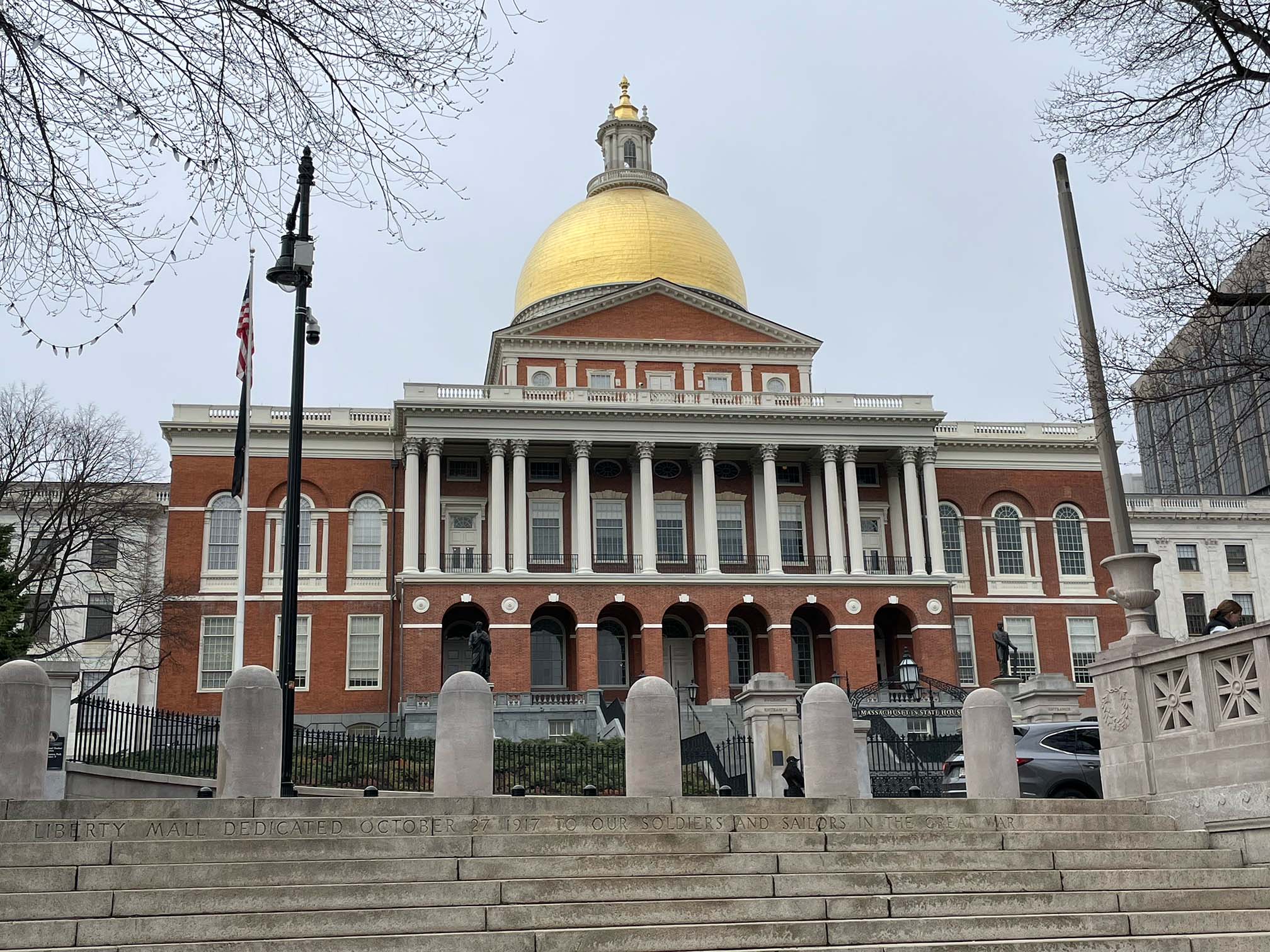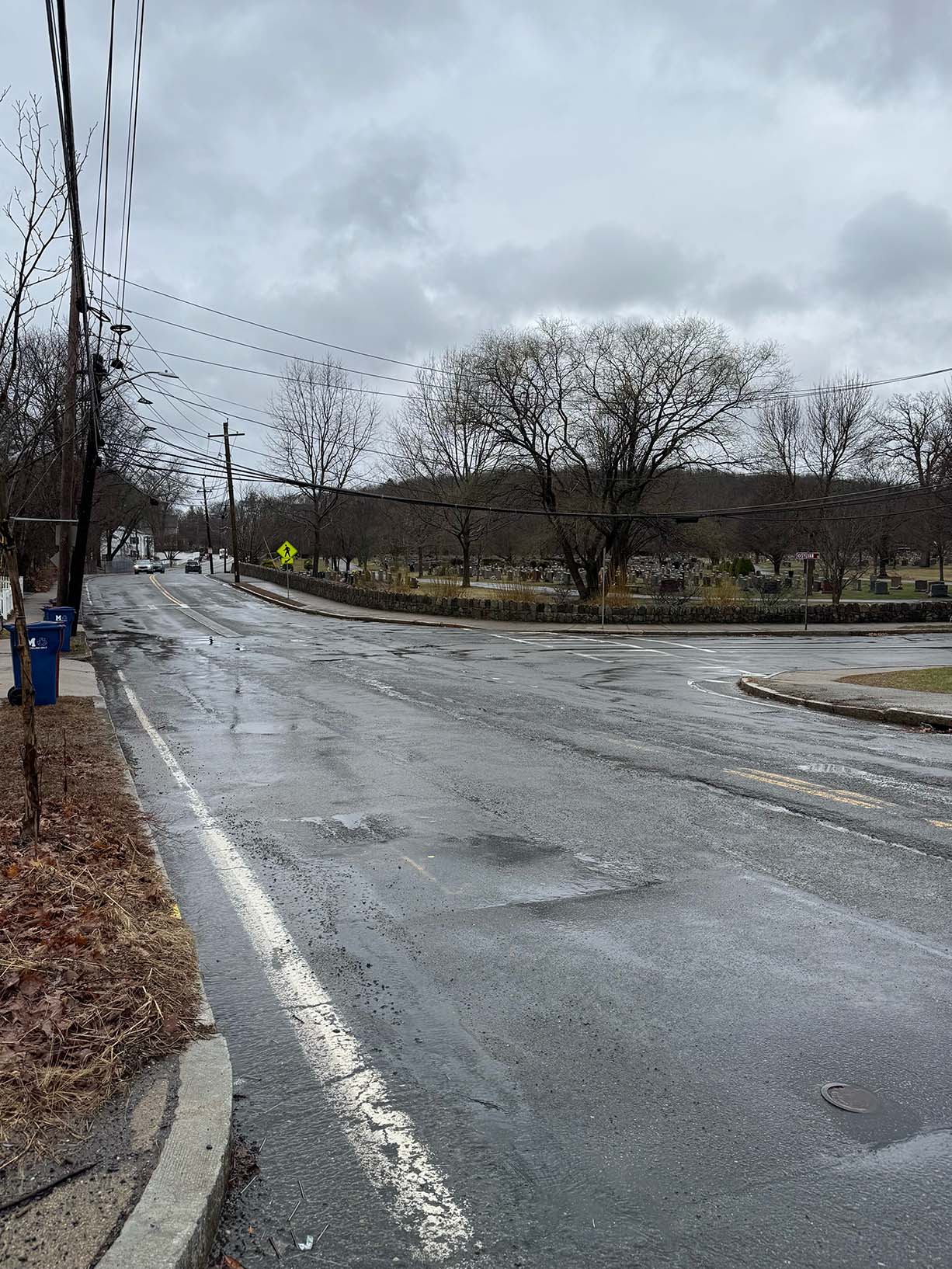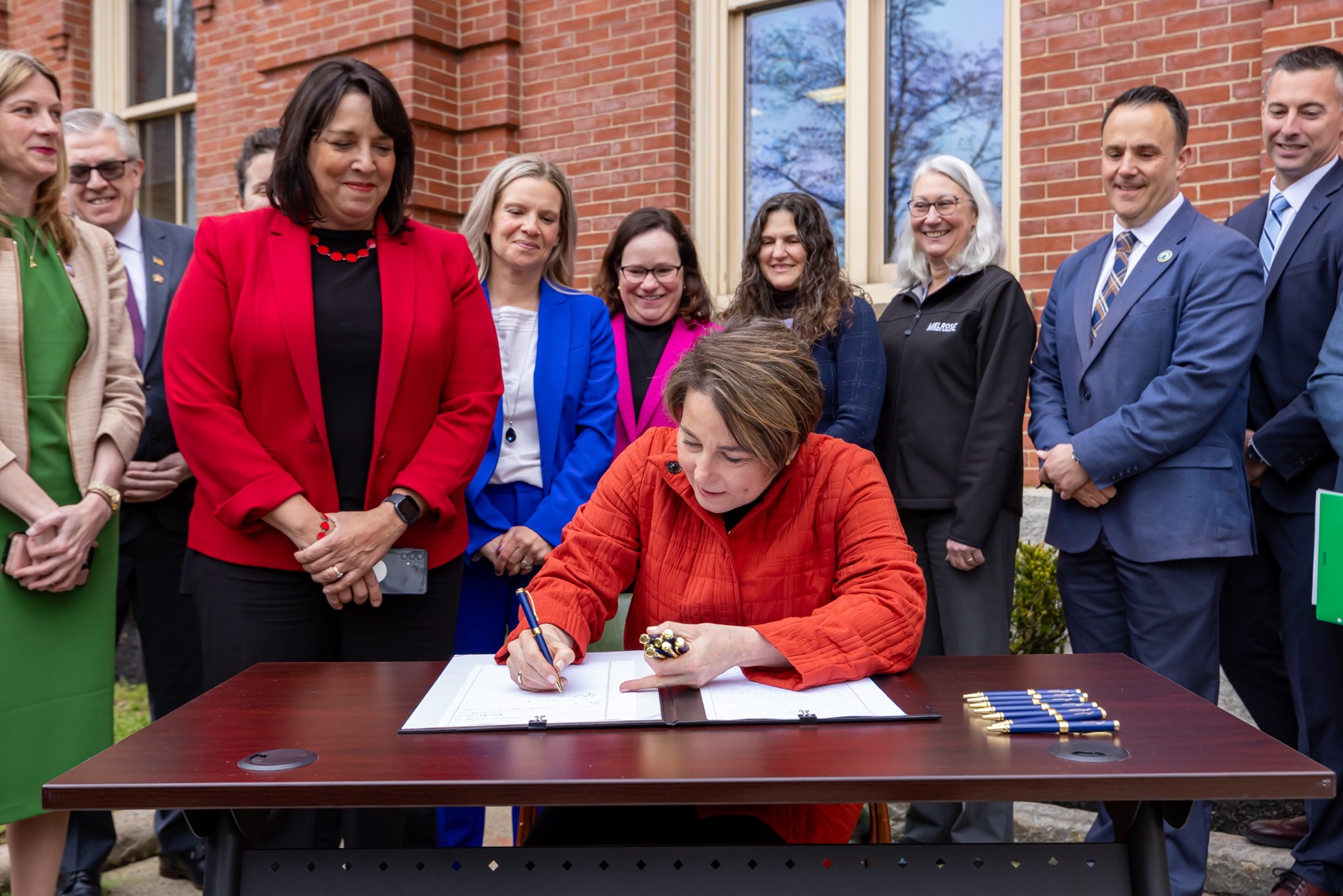Mayor Discusses Potential Impact of Federal Funding on Melrose
By Ellen Putnam

Mayor Jen Grigoraitis, center, with other members of the Metro Mayors Coalition at the State House on Tuesday
Photo From City of Melrose
On Tuesday, Mayor Jen Grigoraitis, along with other mayors and town administrators from the Metropolitan Area Planning Council Metro Mayors Coalition, met at the Massachusetts State House with House Ways and Means Chairman Aaron Michlewitz to discuss how changes to federal funding over the next months and years could impact cities and towns across the state.
There has been uncertainty over whether cities like Melrose will receive anticipated federal funds since President Donald Trump’s administration ordered a freeze on many federal grants in January, an order which is currently blocked by the courts. And a number of potential cuts to federal agencies and programs, including the Department of Education and Medicaid, could have significant impacts at the state and local levels.
This is already a challenging budget season for the City of Melrose: the city is currently facing a $6.1 million budget deficit going into Fiscal Year 2026 (FY26), which starts in July. Uncertainty around state and federal funding will make planning for the future, or even for the next few months, all the more difficult.
“It’s all interconnected,” said Mayor Grigoratis after this week’s meeting. “Neither the federal government nor the state does any type of budget forecasting. And if the city had done a budget forecast at this time five years ago, we would have had to rip it up.”
Both the Melrose Public Schools and the City of Melrose receive direct funding from the federal government, and are also impacted indirectly by federal funding in many ways.

The Massachusetts State House
The Melrose Public Schools receives a number of federal grants, including $1.1 million in grants for special education through the Individuals with Disabilities Education Act (IDEA); $230,000 through Title 1 to support low-income students; and $300,000 in Medicaid reimbursement for health-related expenses in the school setting.
“There is a real concern about that money going away,” said Grigoraitis. She announced last week that her administration would be adding more money to the City’s Special Education Stabilization Fund, “so we can attempt to provide the district with some protection from a claw back and/or reduction of federal funds in future years,” last week’s memorandum stated.
“We don’t have the ability to fully backstop those funds,” Grigoraitis emphasized, “I don’t think any municipality does. But by law, we have to provide those services, regardless of the cost. It’s a real conundrum.”
The City of Melrose also receives some direct federal funding for projects such as stormwater improvements at Ell Pond and on Lebanon and Sylvan Streets. In the latest continuing resolution passed by Congress to prevent a government shutdown, all congressionally directed spending, or earmarks, were eliminated.

The intersection at Lebanon and Sylvan Streets in light rain
“We had a request in with Representative Katherine Clark for $800,000 to redo the Memorial Hall parking lot, which floods,” Grigoraitis said. Without federal funding, she explained, “it’s an ongoing project with no funding source. And if we’re allowed to make requests in the FY26 federal budget, we don’t know which requests will be considered for the delegation from Massachusetts. In the past, we’ve consistently gone to the federal government to get money for stormwater management, and now it’s uncertain at best what that will look like for the next three years.”
Melrose was also awarded $3 million in federal funding last year to build the new police station as a net zero, green building. Whether that funding will still be available for the project is currently unknown.
In addition to direct federal funding, the city also relies on state funding in many areas of the budget. Melrose received $18.7 million from the state in local aid this year, including $12.4 million in Chapter 70 aid for the schools. (The city’s total budget last year was $104.1 million.) Last year, Melrose also received $520,000 in Chapter 90 funding for road improvements, and the city periodically receives state grants for a range of projects.
“The state also contributes to our community in a lot of indirect ways,” added Tom Dalton, the city’s Communications Manager. “Economic development, housing. The T is really important to our residents. Any impact on those programs would have an effect on us.” City departments also benefit from state resources, including first responder training - currently, new hires can attend the police and fire academies at no cost to the sending departments.

Last spring, Governor Maura Healey, seated center, came to Melrose to sign a $275 million Chapter 90 bill for infrastructure improvements that included $520,000 for Melrose. This type of funding may be in jeopardy if there are cuts to funds that the state receives from the federal government.
Photo From the Office of the Governor
“The state has a lot more resources than we do,” said Grigoraitis, “but they can only plug so many holes if federal funding goes away. If Medicaid goes away, that’s schools, nursing homes, healthcare for anyone on Masshealth. It’s such a massive infrastructure that, if the state attempts to plug that, it would leave little room for anything else in the state budget.”
This year, the state budget included $20.3 billion for MassHealth, the state’s Medicaid and Children’s Health Insurance Program. All but $8.2 billion of that was reimbursed by the federal government. (The state’s total budget for last year was $57.8 billion.) MassHealth covers over two million of the state’s 7.1 million residents.
One possibility that local governments may need to keep in mind is that the state government is permitted by law to make midyear budget reductions, often referred to as 9C cuts. This has been done in the past, notably in 2012 under Deval Patrick’s administration. These cuts can be made to state agencies as well as to local aid.
“We recognize that we could set our local and state budgets,” said Grigoraitis, “and have it blow up in the fall and all be scrambling.”
“I think there’s often a desire to view local governance outside the realm of state and national politics,” Grigoraitis went on. “And that’s just not possible. It’s all connected. The decisions they make in Washington will impact our services, and they will impact our residents. People are going to be looking to the city to help them, and we just don’t have that many levers that we can pull.”
“The state,” she continued, “is exercising caution because they’re trying to make sure they’re ready for whatever is going to be the worst impact. It’s so hard to know, when every day you pick up the paper and read about new proposed cuts. When does the state step in and say, ‘we’re going to fix this’? It’s hard to know if we’ve already seen the greatest harm, or if it’s yet to come.”

Follow Us: